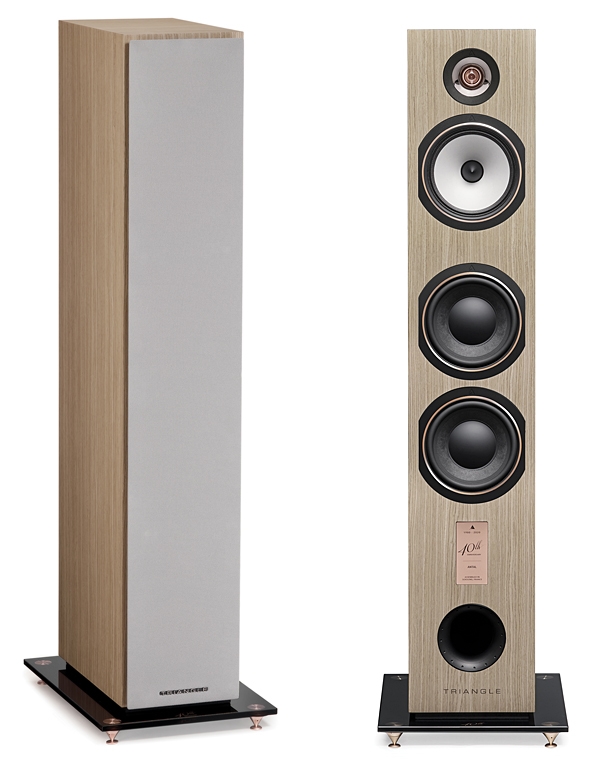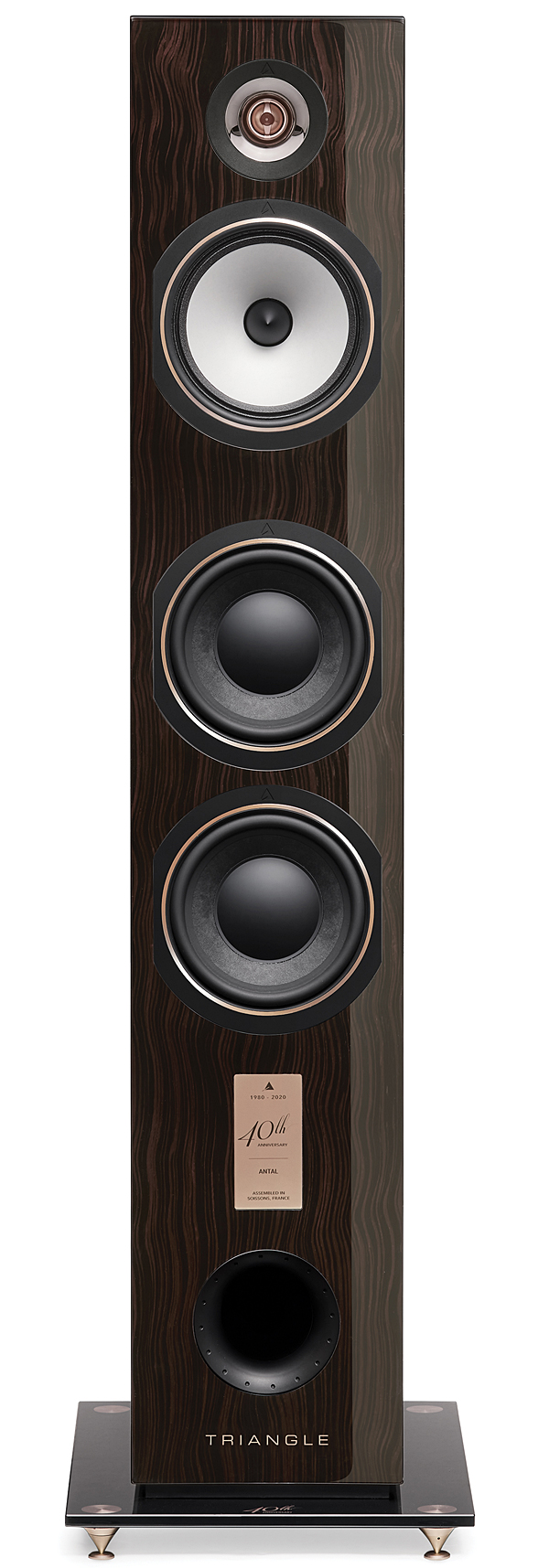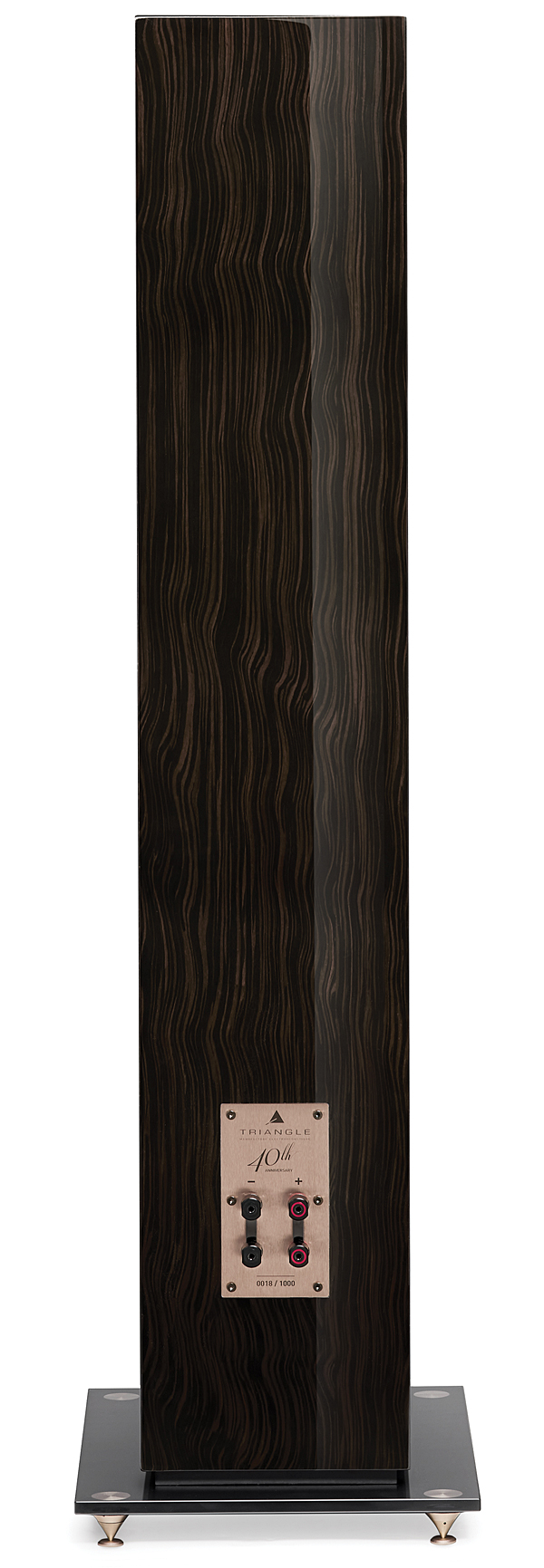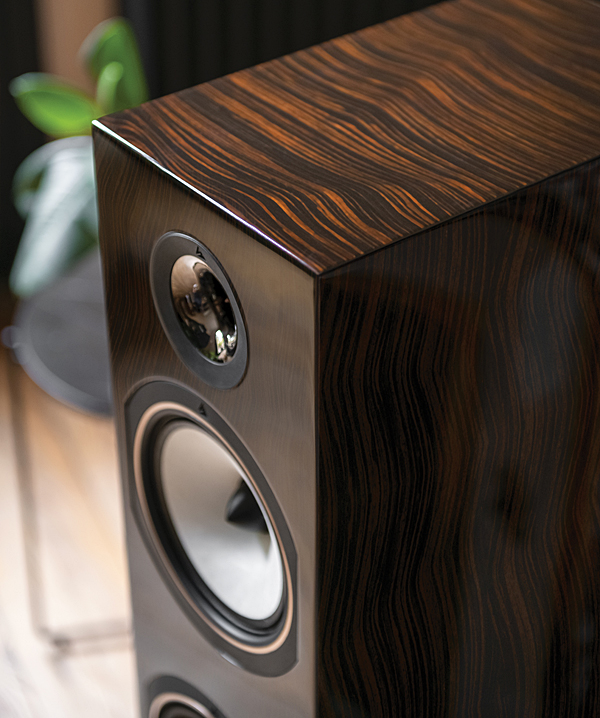| Columns Retired Columns & Blogs |
Thank you.
An instant classic review!!!

Some people, including some audiophiles, believe that product habituation is what's really behind what some people refer to as product break-in. It's not a mechanical or electronic phenomenon, they contend, but a mental one. Assuming the sound of the new gear is of adequate quality, it's the listener that breaks in to the product, as the product's sound, which was initially strange, grows more familiar and, so, right.
Those who believe in break-in view the process as a period during which a component's signal-carrying parts are "settling," the concomitant effect of which is a gradual improvement in sound quality, until whammy! Everything has seemingly, finally, coalesced into a relaxed, cohesive, enjoyable presentation.
Except that's not what really happens, according to the habituation theory. That whammy? That wasn't the sound blossoming into a beautiful swan (song?), it was, rather, the moment your brain completely bought the illusion—an illusion that had been there all along.
I'm a compromiser. I'll venture that both things are happening—that habituation accounts for about half the break-in story. While humans may be the most adaptive species on Earth, it's jarring when something new replaces something we're used to. It knocks us out of familiar territory, forcing us to question what we thought we knew and what this new, intrusive thing is all about.
If the sound of the unfamiliar gear is fundamentally good—if there's nothing in it that's intrinsically objectionable—our brain adapts. It connects the new dots with the old ones, reorganizes the data, fills in the landscape. If it's very good, it will become a new frame of reference for us, another example of what audiophile sound can be. This audiophile sound may not be quite the same as the last audiophile sound, but in time it turns out just as valid.

Beyond anything to do with notions of neutrality or flatness or absolutes, our hobby has always been about capturing lightning in a bottle, over and over. It's about hitting those high-water–mark daydream states when the (reproduced) musical performance embodies the music's essence to such a degree that we forget that what we're listening to is an electromechanical simulation. Not every product capable of doing this does it in the same way. Think how fundamentally different Magicos and Zu Omens sound from each other. Yet, both have been reported to convey enough of music's essence as to lift listeners to those high-water–mark, daydreamy states. I'm sure you have your own examples of very different sounds that both work.
When I reviewed the Monitor Audio Silver 500 7G speakers, I went through the habituation process. When I substituted the Monitor Audios for my Focal K2 936s, I found the sound destabilizing. It was incongruous with my frame of reference, which I had constructed around the Focals.
The 40th Anniversary Antal
I went through the habituation process again with the subject of this review, Triangle's Antal 40th Anniversary Edition. I'd been told by the importer that the speakers were broken in, but still, after I installed them and let them play for a few days, among my first thoughts when I settled in to listen was how, relative to the Focals, the Antals seemed to produce less bass energy and had a more detailed and perhaps brighter upper midrange. I couldn't be sure. I was still fresh into the habituation process, and who knew if the speakers were fully broken in?
The difference I heard going from my Focals to the Triangles was less pronounced than that going from my Focals to the Monitor Audio speakers. Could it be because both are French products while the Monitor Audios are English? Does French hi-fi have its own sound? (footnote 1)
The speaker's 40th anniversary designation refers not to the Antal but to the company: Triangle was founded in 1980 and turned 40 at the peak of the pandemic. The speakers celebrating that anniversary weren't finished until earlier this year. The 40th Anniversary series, which also includes a standmount, the Comète, is third highest in the company's 6-series passive-speaker lineup.
The Antal, in one form or another, has been around since 1994, which means that we could be celebrating the Antal's 30th birthday, with about the same accuracy as the company's 40th. There have been eight versions since the Antal's introduction, including this one.
The differences between the Antal 40th and the standard Antal—called the Antal Ez and still in production—are substantial. In place of the Ez's titanium tweeter dome, the 40 uses a lighter, more rigid anodized-magnesium one that's said to provide higher efficiency, lower distortion, and better directivity than the standard dome. The two tweeters employ the same compression-horn technology.

The second major change can be found in the new bass drivers. The 40s are said to use a more elaborate and stiffer paper membrane in that driver, made of two types of wood pulp, flax, and carbon fiber, and a bigger, more powerful magnet assembly; the new driver is said to deliver tighter, better-defined bass. The 40th Anniversary Antal's is specified to extend to 40Hz, same as the regular Antal. When it comes to the cones in the all-important midrange, at Triangle only one material will do: paper. In an email exchange, Hugo Decelle, Triangle's general manager, explained, "Triangle has always favored paper membranes because we believe it's the material that can most accurately reproduce the human voice. So, for 40 years, Triangle has conducted research on cellulose pulp. And recently, we've brought another innovation to our paper material. We now use a natural cellulose pulp—an untreated paper—so it's lighter and produces more realistic timbres than its predecessor." Get the vocals right, goes the theory, and you'll have a midrange to live for, timbres possessing authenticity that synthetic materials such as polypropylene, aramid fiber, and various metals can't match.
Triangle believes so much in the superiority of paper as a cone material that even its $60,000/pair flagship Magellan Grand Concert speakers use it.
"There will always be new ways, as technology permits, to perfect the material and shape of the paper," Decelle continued. "We do a lot of very precise optimization work on the pleats and profile of our cones. Each new generation of loudspeaker sees the shape of its midrange cone slightly modified to improve certain frequencies. The Antal 40th has the most optimized midrange cone ever developed at Triangle."
Other improvements over the standard Antal include better internal wiring (borrowed from the company's one-step-up Signature series) and a more rigid cabinet, with higher density MDF panels used in both the Signature and the top-of-the-line Magellan series.
Every Triangle speaker, from the cheapest to the most expensive, is designed at the company's workshop in Soissons, France; most are built there. Why not Asia? "That's a loaded topic," Decelle said. "But we decided to continue to build our speakers in France. We even repatriated some of our other building projects. There are two reasons for that. Building locally gives us a level of quality we can't get offshore. In France, we have speaker builders that have been with us for over 30 years. It's their career choice. They know what the quality of every piece should be, and they have access to state-of-the-art quality-control facilities. It's they who determine if our speakers meet our standards acoustically and cosmetically before they leave the plant.

"The other reason we build in France is social. We want to grow our business locally and create local jobs. I consider it our duty as a society, and me, as a citizen of where I live, that company and country prosper in tandem. Plus, the COVID situation has changed things. International transportation costs have become so costly that keeping our manufacturing in Europe has given us back an economic edge."
La préparation
I put even more importance on my first impression of a new piece of equipment than on my first impression of people, and that starts with the unboxing (of equipment, not people). Here, the Triangles broke new ground. They were the tightest-packed product I've ever tried to yank, shake, hand-bop, and slide out of a box. There was such an absence of wiggle room between each speaker and its armor that I had to use a letter opener to wedge it out surgically. Forget the speakers; the packaging was optimized.
I took that as a good first sign, followed by another. Each carton contained a user's manual (Yay! times two) and a gold-colored cleaning cloth embroidered with Triangle's snazzy 40th Anniversary logo. Too pretty and pristine to use, I thought. That same gilded logo was also emblazoned tastefully on the speaker's protective nylon shipping hood and on a gold plate on the front baffle. Even the tweeters looked fetching with their 40th anniversary rose-gold trim. With all this ornate celebratory symbolism, not to mention the speakers' immaculate, dark-lacquer Santos Rosewood finish, how could I not feel bowtie-and-tuxedo festive? That's how spiffy these speakers looked.

Thank you.
An instant classic review!!!

that "breaks in" is the audiophiles brain. Opinions to the contrary are audiophile nonsense. But there's an aweful lot of audiophile nonsense about everything here so who am I to complain? Whatever you believe is true for you. A lot like religion. If something has no basis in fact then we're all free to believe whatever we decide. It's all good.

Your comments bring this place down. However, my new strategy is to ignore your opinions as I would the ravings of a mad man. Yes this is an ad hominem attack because to even debate what you are being a contrarian about is to stoop too low. A mind like yours cannot accept such abstract concepts. I'm surprised that you can even listen and understand music.

would you accept Klippel factor measurements vs break-in time as proof of brake-in affects? Spider material as much as rubber or whatever the material surrounding the cone measurably change their stiffness & damping properties, especially vs displacement, after having been worked back and forth a couple of (hundred or thousand) times. non-linear properties to plastics isn't really a new thing in science.
See literature on Klippel factors.
PS: it is considerably easier to claim & proof the existence of a particular effect than its universal absence.
best regards
hb72

to get addictive it is necessary that the sound meets the "expectation" you expect from the sound of your hi-fi.

there was someone quite famous in this business who said along the line of , " if you can hear it and it can't be measured than we are measuring the wrong thing." We are all stupid for believing and hearing that audio equipment breaks in but you guys in the white lab coats on audio science review know better than us fools. If that's true, don't go to stereophile to comment just like I dont comment on the audio science review. Keep your opinions to yourself and let us deluded fools us enjoy Stereophile and let us waste our money how we want.

...verges on projection. It wants for traceability and falsifiability, and it contradicts reams of cross-linked, patternable user evidence. It gatekeeps for X what Y may hear. At its best the theory of habituation relies on disconnected assumption and at its worse it abuses and impairs the audio high end.
Together with the myth that things may not break in because reasons, it's another failure of pseudo-reductionism, in this case back down to average sound.
In no field is a phenomenon adamantly disallowed for you until I can prove it to my satisfaction. Just here.

Haven't we heard all these arguments from both sides before? They each fail to convince the other side.
I prefer to take each review at face value, including issues such as this, that inform us of the author's perspective and interpret it in the context of my own perspective rather than throwing out the baby with the bath water.

Funny story happened to me a few weeks ago regarding product habituation. A chap was selling a pair of Linn Kan stands and a recently refurbished pair of Linn Kan I’s. I got the stands and then wondered about buying the Kan I’s. Owning a pair of IIs, I thought it would be fun to do a side-by-side, but I thought better of it than spend $500 on a whim. A week later, he had reduced the price to $350 and told me that Linn purchasers were picky and didn’t want them because he had re-veneered the wood and wasn’t stock looking anymore. He offered to send them to me on his dime and compare them with mine and if I liked them, I could pay him after. When I finally compared them to my II’s I was stunned; mine sounded lifeless; I put my ear to the tweeters to ensure they were working. I checked with companies in the UK, including Falcon Acoustics, about what would cause this, and they think the caps in the crossover were toast. But I realized I was listening to these speakers the last few years, thinking everything was fine when they were slowly declining as performers. The I’s with the new caps, new Falcon Acoustics woofers, and new Hiquaphone tweeters were clearer, more detailed than my ten years younger IIs. Amazing what tricks my brain played on me, always knew I didn’t have golden ears. Time to recap and bring those II’s to full spec.

A room acoustics friend of mine said that the sound of our gear invariably changes due to the constant flow of current running through the components. It's a process that results in altering frequencies and shifting phases, some of which our brain adapts to, some of which it doesn't, and all of which renders the overall sound less involving to us over time.
If it's true, it's a good argument for new or refurbished gear.

If it's true. Does your friend have a reference to any study or investigation of this?

Actually, at this time, to answer your question, Kal, he "more likely does".
This friend works in the industrial acoustic treatment field, mostly to do with soundproofing and lowering room reverberations. He also has his own acoustic treatment business that caters to audiophiles. He mentioned the above theory — those shifting tonalities, frequencies, phases — as being one of the prime reasons why audiophiles, particularly those who never cared about room acoustics before, are now looking for a way to regain their diminished enthusiasm for their system's sound.
And it appears that acoustic treatment can work to this end, because it's designed to compensate for acoustic imbalances. That doesn't mean, however, that it might not be a better idea to just buy something new to replace the old.
I'm sure his work — his passion — is based on scientific evidence, but my gut tells me it's a plausible theory.
I'll ask him for a reference.

There was a guy in my Hi Fi Club who had a major league system, built around some "A" grade equipment.
When I first sat in his room, I thought he had found sonic paradise. Imaging, frequency response, everything.
It had that "live in the same room illusion."
It was perfect, until it started to dawn on me that while it certainly did have all those qualities, it was more like 'live in an eternally unchanging room.'
All the music had that great feeling, but every recording was placed into the same sonic room, over and over.
It wasn't doing anything wrong, but over time I came to dread hearing it.
Everyone's, even Jack L's, system sounds basically the same from day to day....habituation leads to some slight ennui which leads to changing gear. All systems fail that final test of live v recording. At first we may marvel at how close they come, but over time, we tire of hearing the same failure day after day, and we move on.
In general.
Sorry for drifting from the topic of breaking in gear. Breaking us in or breaking us down is also a big part of the hobby, for sure.

This is why I have 3 systems with different characters. A fleawatt SET with full-range open baffles. Then massive Maggies with tube pre and Class D amp. And then mini maggies with class A amp, for near field. Get a little tired of one, go to another.

I believe in your system,exactly.
I had a friend growing up who was like this when it came to dating: the initial rush, habituation, moving on.
Sometimes 'different' is actually what we perceive as 'better.'
Thanks for your great post!